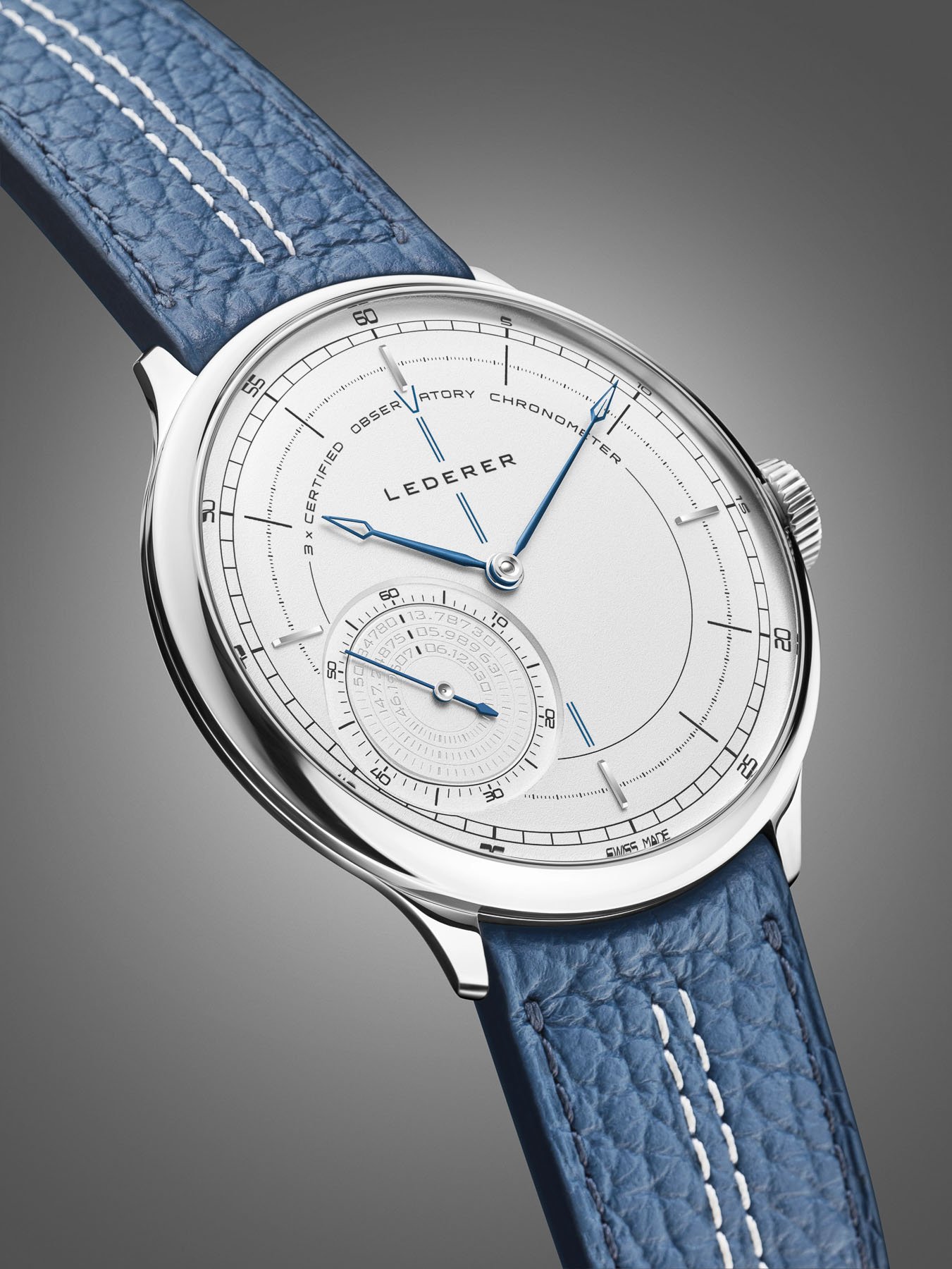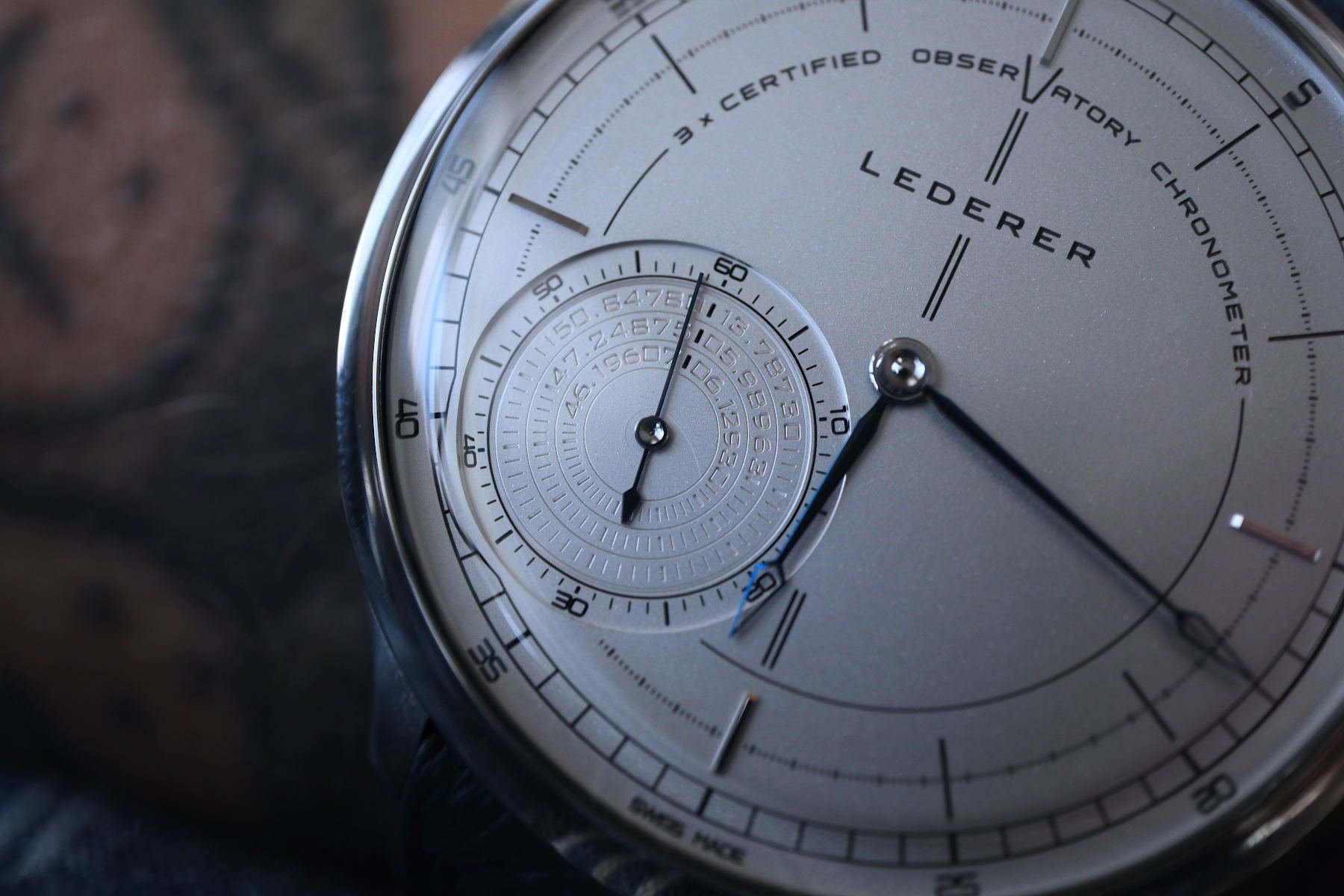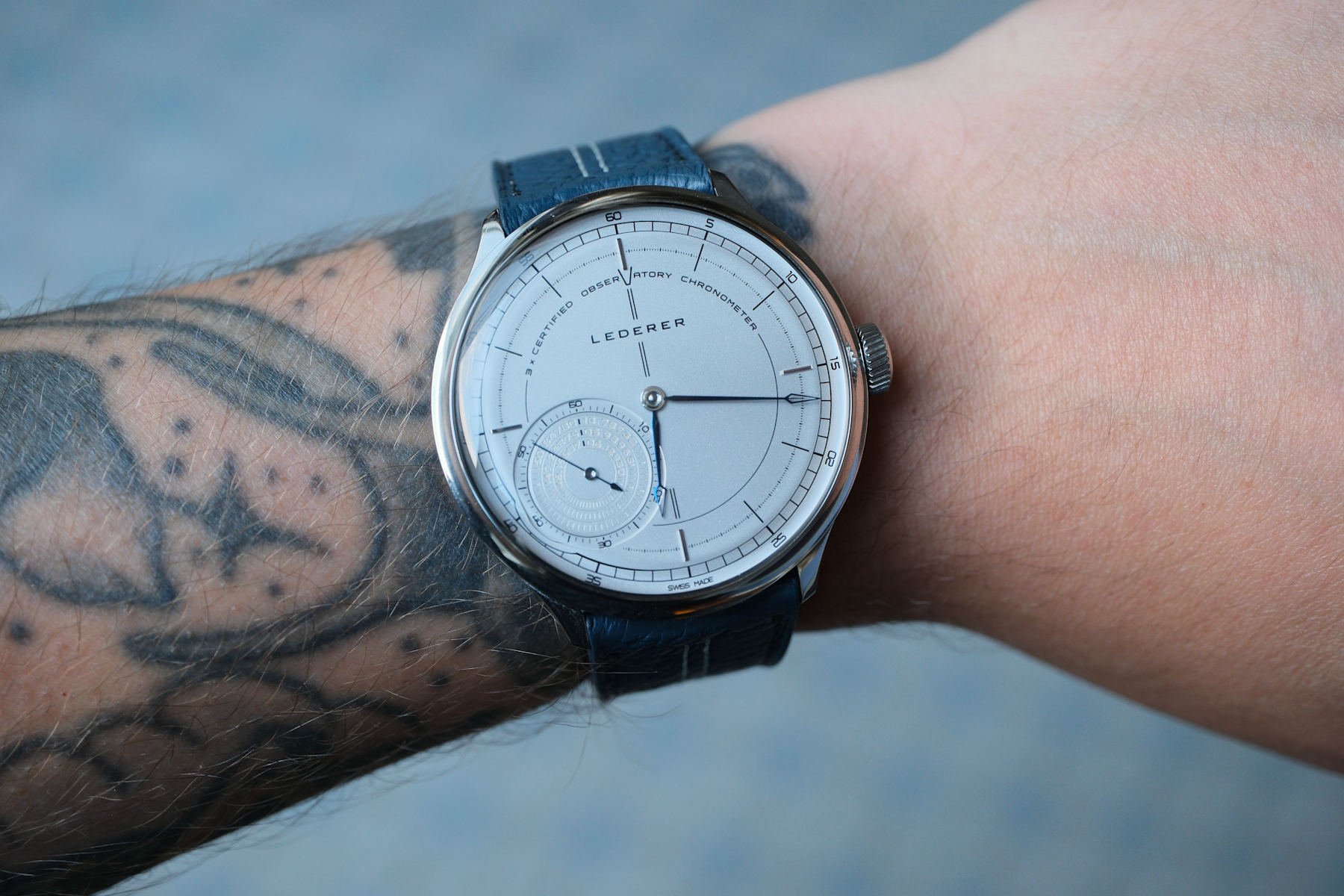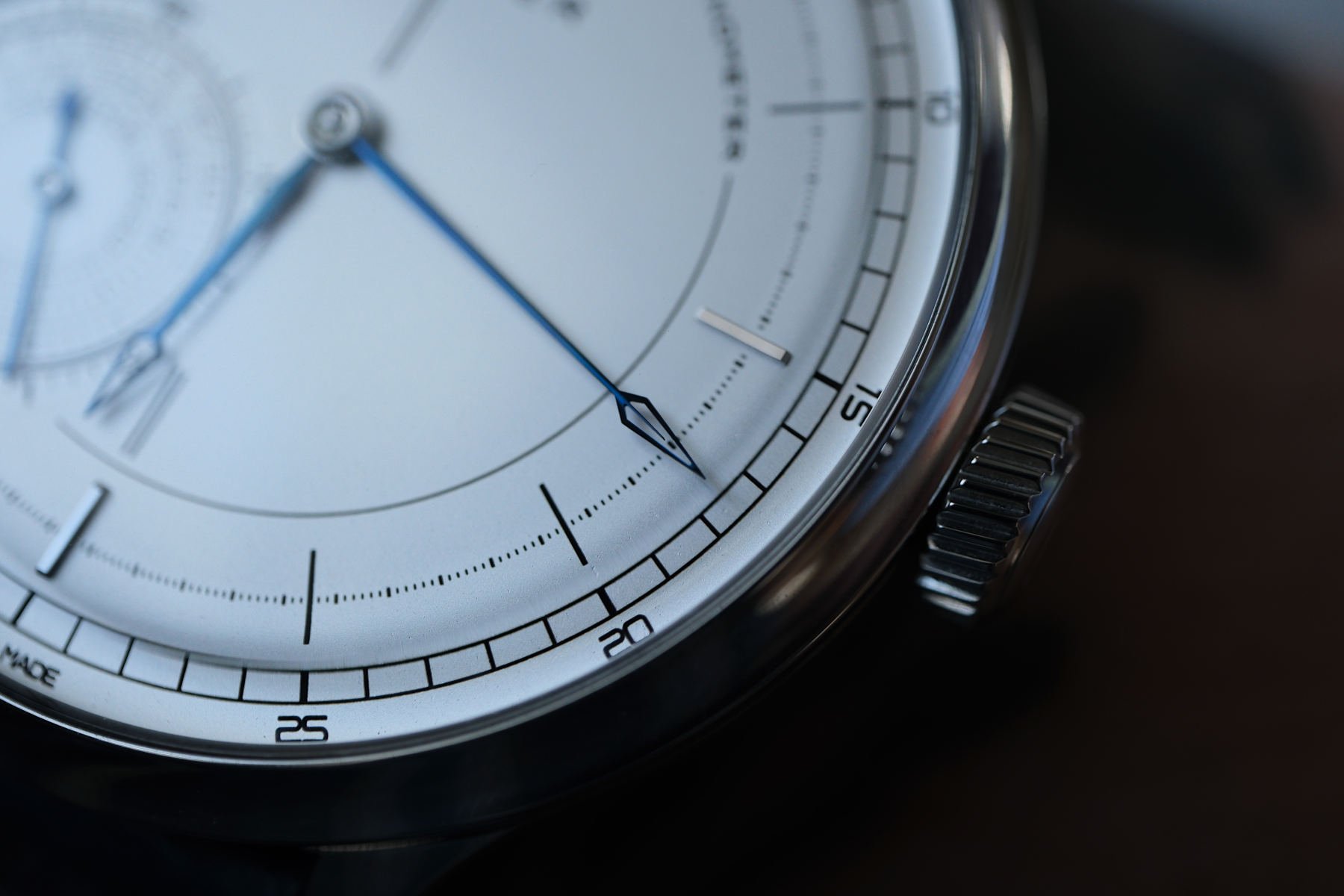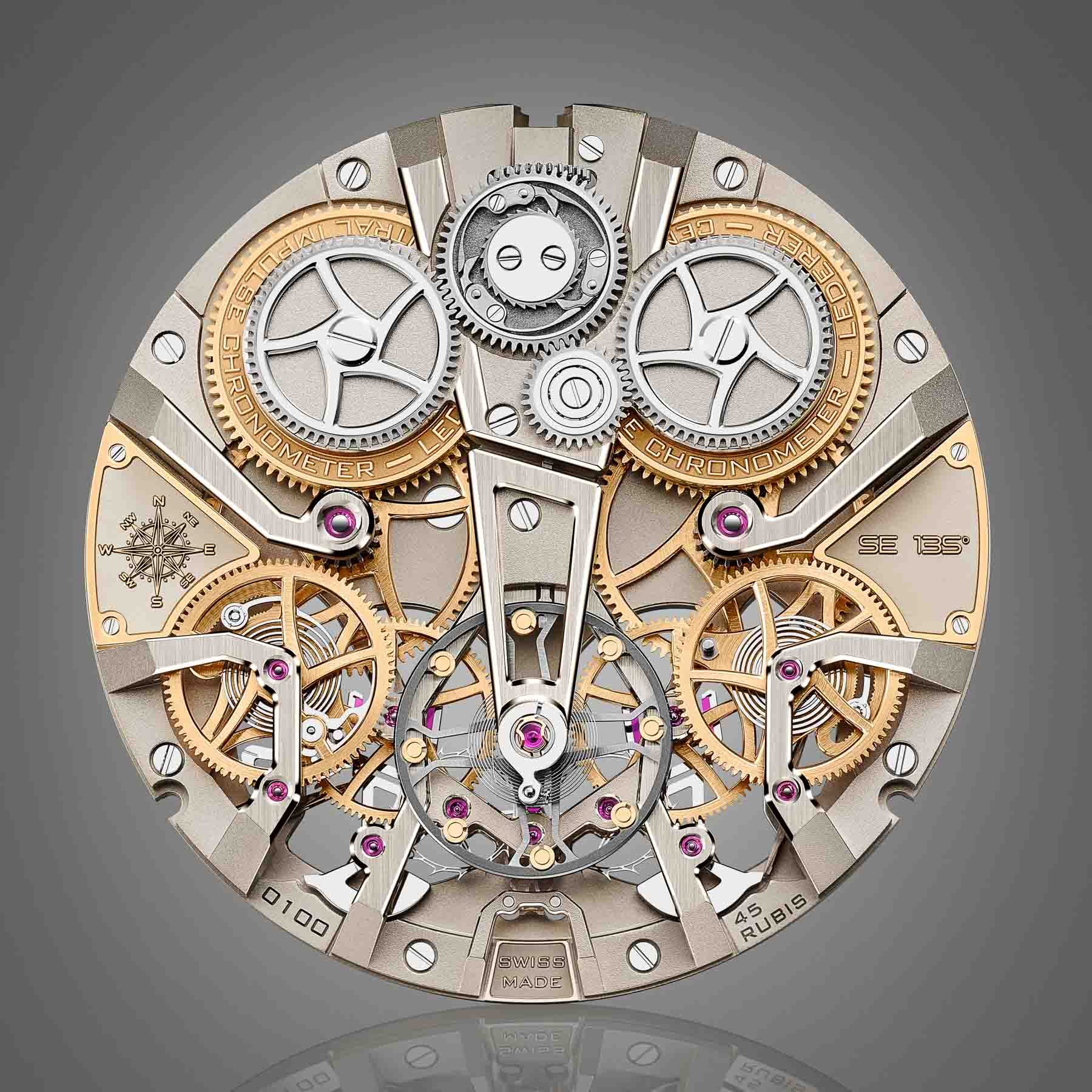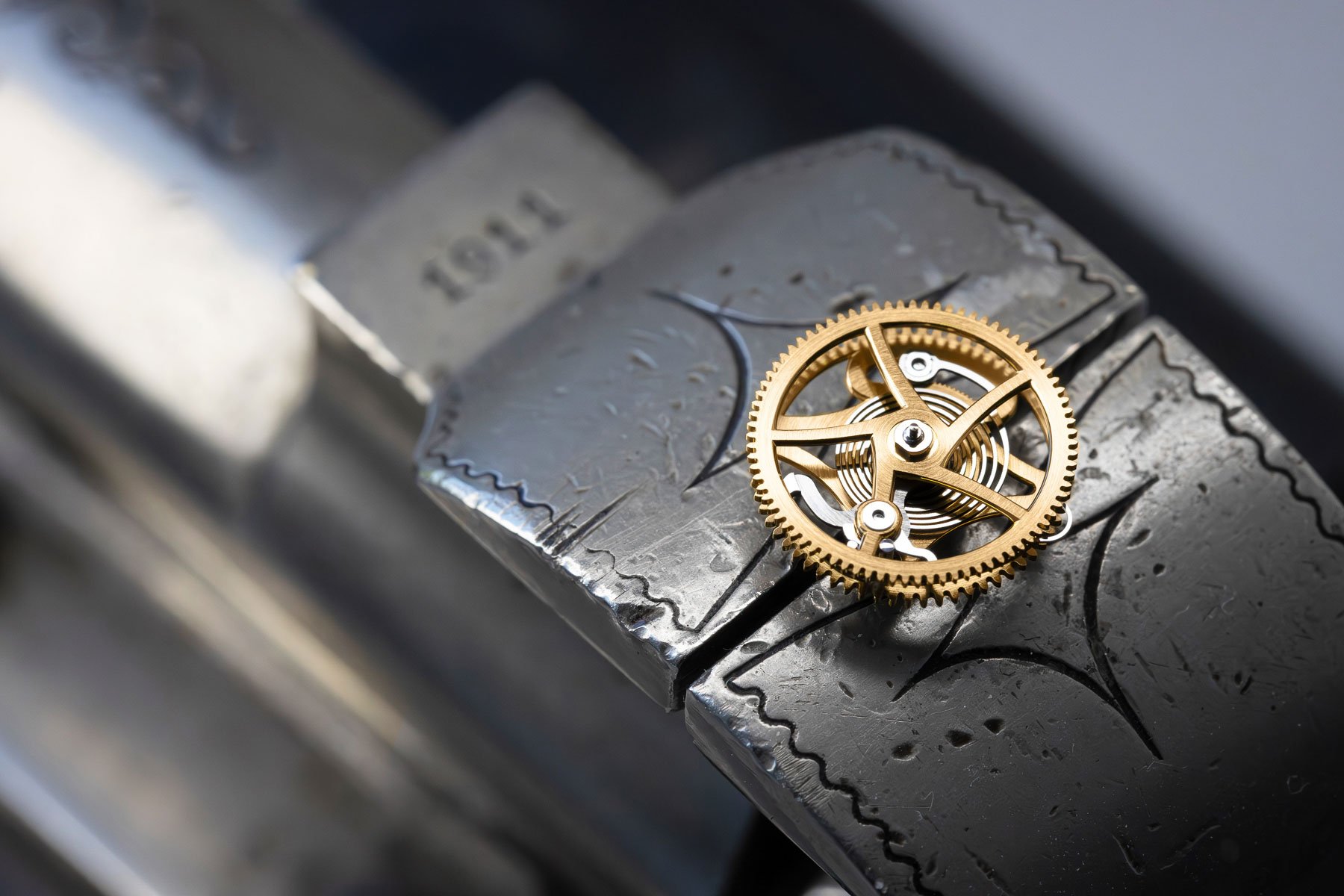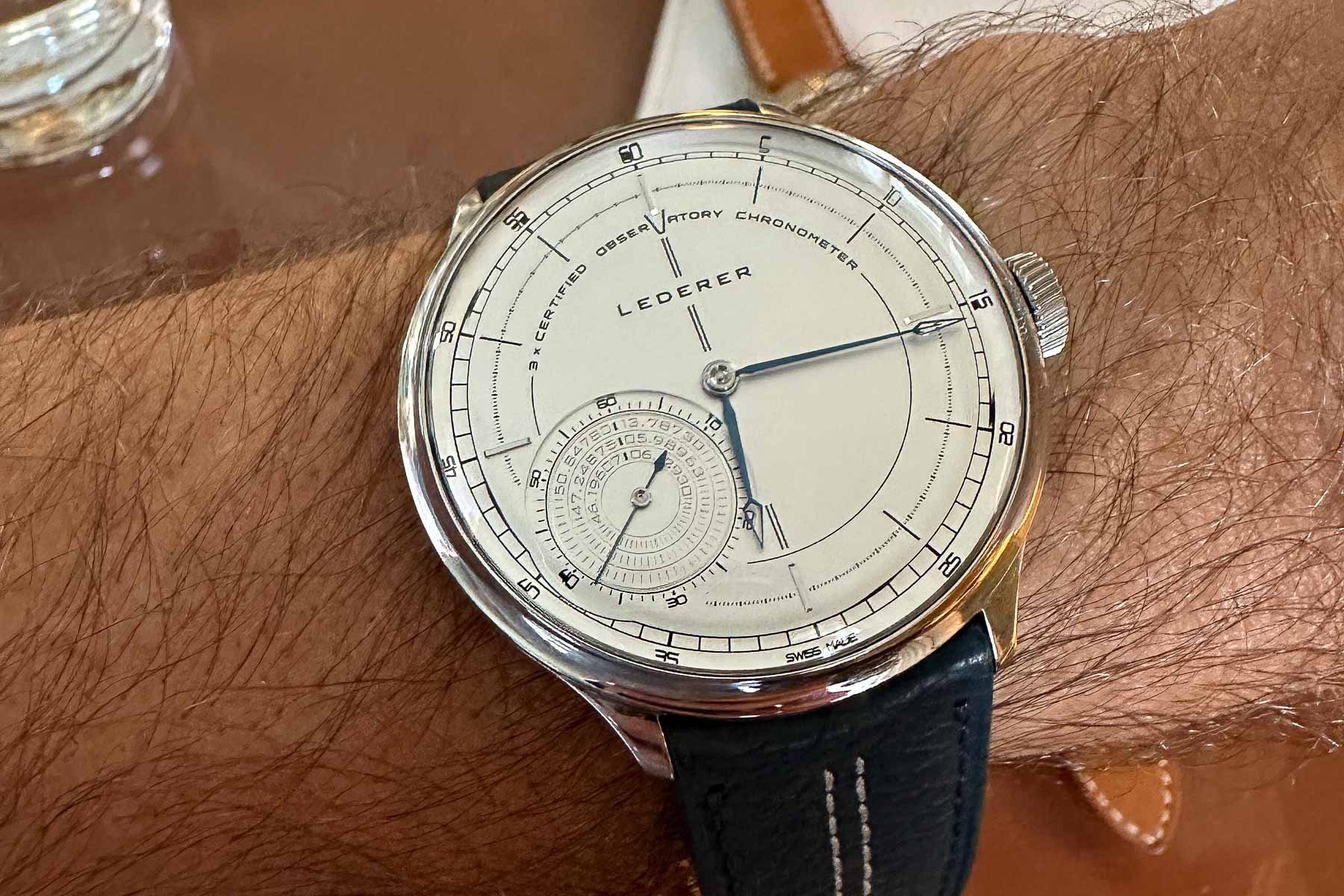Hands-On With The Lederer Triple Certified Observatory Chronometer
During Geneva Watch Days 2024, we had the opportunity to visit Lederer. The brand focuses on highly technical escapements, which are made by Bernhard Lederer. The new Lederer Triple Certified Observatory Chronometer stood out among the various timepieces we saw due to its impressive movement and testing schedule.
My colleague Dave Sergeant and I paled around at Geneva Watch Days 2024, and he introduced me to brands I hadn’t seen. Lederer was one example, and I’m pleased that I accompanied him. Bernard Lederer is a master watchmaker who has restored challenging vintage and antique movements. He has also created an eponymous brand that blends traditional methods with innovation. His interest in escapements was hard to ignore after the first few minutes of our visit. We also saw the brand’s newest and most audacious release, the Triple Certified Observatory Chronometer.
The Lederer Triple Certified Observatory Chronometer
The Lederer Triple Certified Observatory Chronometer is a 44mm watch in polished stainless steel with a handmade sterling silver dial. It also features a blued handset with skeletonized tips on the hour and minute hands. Large sapphire crystals on both sides of the case provide a clear view of the dial and movement. The case measures 12.2mm thick, and despite its large size, this isn’t a sports watch, which explains the 30m water resistance rating. A blue calfskin strap with a stainless steel pin buckle completes the package.
Now that the basics have been covered…
From a distance, the Triple Certified Observatory Chronometer resembles many Bauhaus-inspired watches. However, closer examination and an understanding of why this watch exists reveals a very different kettle of fish. Essentially, Lederer has created eight watches that withstood chronometer tests from four institutions. After receiving a COSC certification, each piece then traveled to the Observatory in Besançon, France, the Observatory in Glashütte, Germany, and the “Observatory Chronométrique” in Geneva, Switzerland. Each watch passed a battery of tests at the three observatories.
Over six months, the watches traveled to these observatories and could not be adjusted along the way. The results were impressive. The first observatory reported a daily deviation of +0.5 seconds across five positions and a deviation of +0.18 seconds per day overall. The first test has a limit of eight seconds, and the second has an upper limit of six seconds. For mechanical movements, the results are incredible.
So, why do we care? The history of marine chronometers is well known, but Lederer does a nice job of explaining the consequences of “normal” chronometer specifications. Did you know that a watch running within chronometer specs could lead to a 70km miscalculation over 10 days of sailing? Even one second can result in a 500m error over one day. This is why the British government was so intent on solving the longitude challenge in the 1700s.
Aesthetics
In keeping with the intent, the Lederer Triple Certified Observatory Chronometer looks like an instrument. However, serious watchmaking chops are at work. The hand-finished sterling silver dial displays a matte surface. A sub-seconds register indicates the longitude and latitude of each of the three observatories. Then, the glorious blued hands house a secret. In particular, the minute hand has a small needle within the skeletonized tip. Under a loupe, it’s possible to see this hand move in line with the watch’s remontoir every 10 seconds along the printed track. It’s mesmerizing, and I enjoyed watching it. Aside from this, note the vertical line running through the dial’s center. This line continues on the strap and signifies the Prime Meridian.
The movement behind the certifications
The Lederer Observatory Chronometer uses the in-house caliber 9012, a manual-winding movement with 45 jewels and 210 components. It has a frequency of 21,600vph and a minimum power reserve of 38 hours. The visual symmetry is impressive due to twin barrels, twin gear trains, two constant-force mechanisms, and two independent escapement wheels.
The double-wheel escapement with central impulses is Lederer’s claim to watchmaking fame. Per the brand’s site, it’s essentially an innovation on inventions by Abraham-Louis Breguet and George Daniels. The natural escapement and independent double-wheel escapement remain, albeit with changes to improve the impulse behavior. These escape wheels also contain a remontoir that rewinds a spring every 10 seconds to create efficient power delivery to each escapement. This is why the minute hand moves every 10 seconds.
Fine finishing on the Observatory Chronometer movement
As expected, the Lederer 9012 movement is finely finished. The brand has added surface graining, bead blasting, and anglage on all interior surfaces of the 39.3mm-diameter movement. Silver, gold, and gray tones lend a modern touch to the overall look. An eight-sided compass rose is depicted on the surface to signify the eight pieces.
Final thoughts and pricing
The Lederer Triple Certified Observatory Chronometer isn’t a small watch on account of its large movement, but that’s not rare for a marine-chronometer-style watch. With short lugs, it wears nicely on someone with a medium-sized wrist. Then again, with only eight pieces, size isn’t a make-or-break issue. The price of CHF 146,000, however, will ensure the watches end up with well-heeled collectors no matter their wrist size. Discussing price is somewhat pointless for a watch like this as it could have easily been a special consignment piece. Instead, I prefer to applaud the creation and rigorous battery of tests that each watch completed.
What do you think of this watch and the mechanical ingenuity inside? Share your opinions in the comments.

